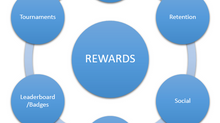Collaborative Level Design using Augmented Reality Tech
- Vishwajeet Kale
- Jan 18, 2016
- 3 min read
My Master’s research topic is Collaborative Level Design using Augmented Reality Tech such as the Microsoft HoloLens and a cloud based game engine such as MaxPlay’s Game Development Suite (GDS).
With the technology advancing rapidly, MaxPlay’s GDS is a cloud based game engine which creates a platform for game developers to collaboratively develop games in run time, in-engine and at distance without having to be in the same place and time. (Wawro, 2015a). MaxPlay’s platform is mainly composed of a native runtime engine and a local-client editor you run on your machine. (Wawro, 2015a). This give developers the ability to work independently or collaborate with others via server architecture of the GDS. (Wawro, 2015a).
The second piece to this research topic is the HoloLens by Microsoft. The HoloLens is an augmented reality device developed by Microsoft which involves productivity applications, virtual calendars, Skype and the game Minecraft. (Wawro, 2015b). Microsoft has partnered with Unity to roll out official HoloLens support for games. (Wawro, 2015b). Both the technologies, Cloud based game engine and AR exist. These two technologies are going to revolutionize the process of game development and design. “The GDS is designed so that all skill sets required to build games can work together simultaneously, in the same game scene or project,” For example, “an engineer or designer makes a script change in New York and I can instantly see the change in the editor, or in the previewer, or even on the intended game platform instantly in Los Angeles…there’s no more waiting for daily builds before you see each other’s work.” MaxPlay is planning to expand GDS’ scope in the future to encompass other platforms, including AR and VR devices. (Wawro, 2015a). Introducing AR technology such as the Microsoft HoloLens to the GDS will only amplify the possibility of remote game development. Developers will not be constrained to being in place at the same time, with the AR tech and cloud based game engines they can collaborate without being in the same room at the same time.These technologies will help streamline the development process of video games. Giving level designers and developers the ability to work on a single platform in run time will help reduce effort of creating build versions and uploading them, this will help save up on time. It also contributes towards reduced efforts and more efficient results for play testing games and it’s levels. GDS offers the ability to perform play tests across various platforms without having to create device specific builds. (Wawro, 2015a). These technologies will not only reduce time and effort but will help make the game development process effective and efficient. (Wawro, 2015a).
In the upcoming months I will continue to research on MaxPlay’s Game Development Suite, AR technologies such as Microsoft HoloLens and Magic Leap and keep up with the latest trends and updates on these technologies. My research will touch topics such as usability, cost and time effective development, compatibility and AR/VR support.
I have chosen the Indie/Mobile Track as my capstone track. My research topic and capstone track are correlated as mobile is one of the platforms for AR/VR technologies. For example, the Google cardboard is a VR device targeted for android mobile phones. Mobile is a one of the main platforms for VR/AR tech companies based on the user base of the mobile platform.Google cardboard does not only have VR apps, but also has developed VR games for the mobile platform. After graduating from Full Sail, I see myself working in the mobile games industry as a game designer, and if given the opportunity, design games for mobile using VR/AR technologies.
References
Wawro, A. (2015a). MaxPlay’s new game engine aims to be ‘Google Docs for game devs’. (n.d.) Retrieved October 12, 2015 from http://www.gamasutra.com/view/news/255932/MaxPlays_new_game_engine_aims_t o_be_Google_Docs_for_game_devs.php
Wawro, A. (2015b). Hands-on: Looking at AR game dev through Microsoft’s HoloLens. (n.d.) Retrieved May 1, 2015 from http://www.gamasutra.com/view/news/242441/Handson_Looking_at_AR_game_dev _through_Microsofts_HoloLens.php












コメント